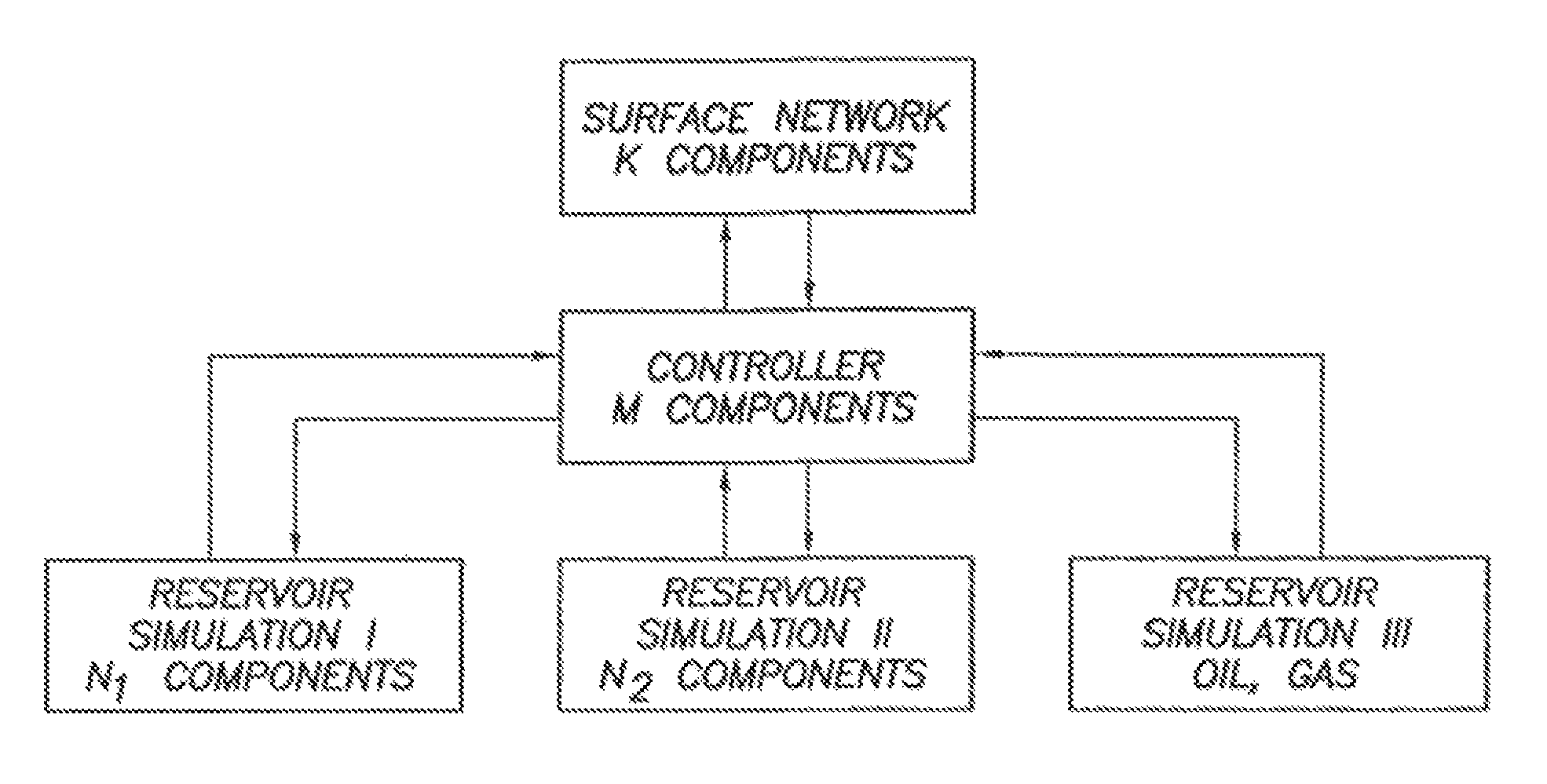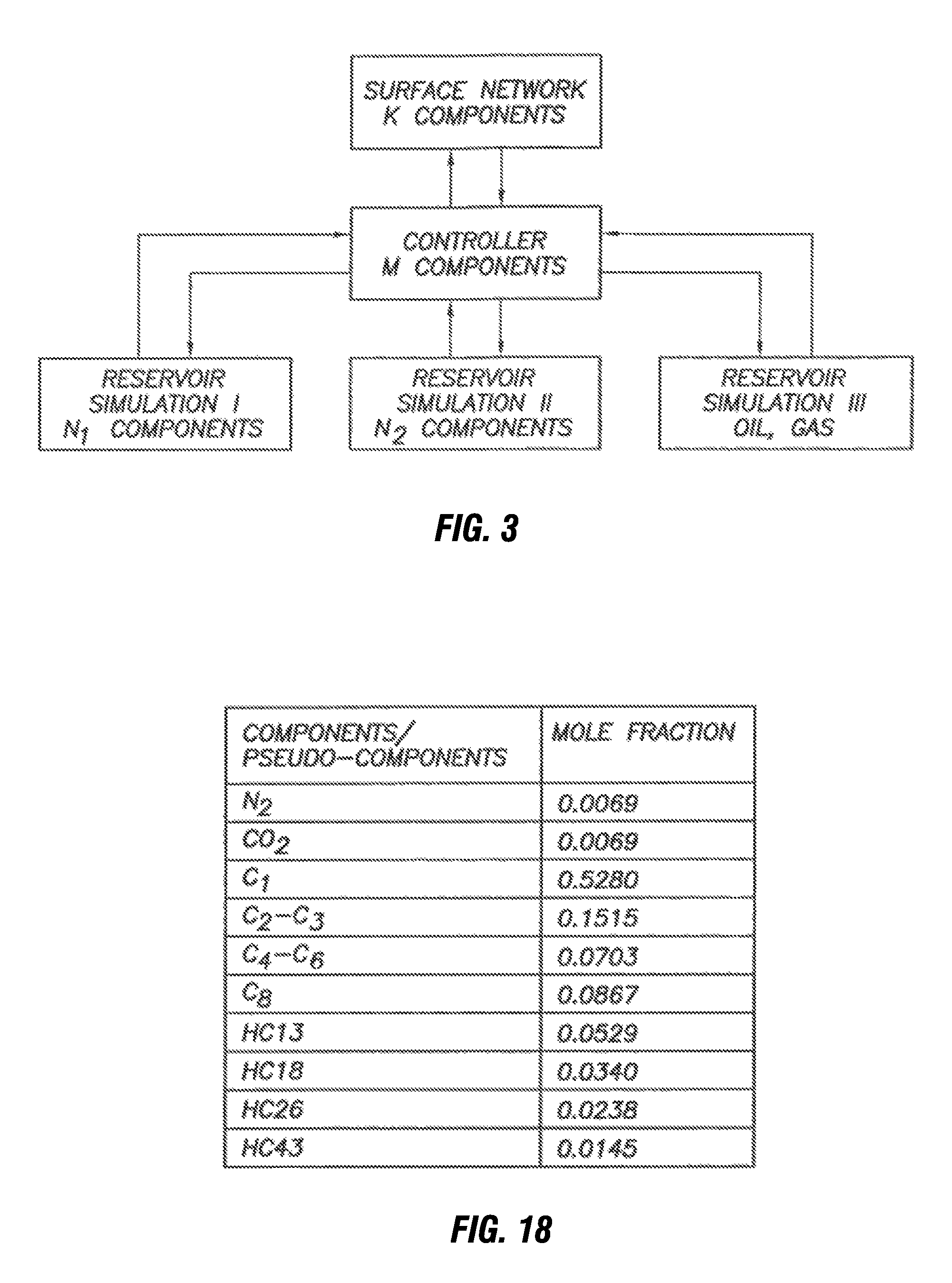Method and system for integrated reservoir and surface facility networks simulations
a technology of reservoir and surface facility, applied in the field of method and system for integrated reservoir and surface facility network simulation, can solve the problems of inability to meet the needs of drilling, inefficient and difficult maintenance, lack of flexibility
- Summary
- Abstract
- Description
- Claims
- Application Information
AI Technical Summary
Benefits of technology
Problems solved by technology
Method used
Image
Examples
examples
[0093]We present two example applications that illustrate the features described above. The first example describes multiple reservoirs coupled to a common surface network, with global constraints applied via network chokes. The second example illustrates component delumping and gas re-injection between three reservoirs with different fluid models.
example i
Coupling Multiple Reservoirs to a Network
[0094]Three sub-sea reservoirs are connected to a common production network. FIG. 7 shows a schematic diagram of the network, which couples to the reservoir models at the well tubing heads. Each reservoir contains four production wells. The produced fluids from each well flow along separate sea-bed flow-lines to a manifold, where they co-mingle. Each reservoir has a single manifold, and a separate riser to bring the fluid to a common production platform. At the platform the fluid from the three risers is co-mingled and transported to shore along an export pipeline. Each reservoir has the same black oil fluid description; the oil is initially undersaturated with a dissolved gas concentration Rs=1.5 Mscf / stb. Initially only two of the reservoirs, Reservoirs A and B, are on stream; Reservoir C comes on stream eight months later.
[0095]The total deliverability is limited by a pressure constraint of 500 psia at the on-shore export node. But the tot...
example ii
Component Delumping and Gas Re-injection
[0099]Three reservoirs with different fluid models are coupled through global production and injection constraints. Each reservoir has seven producers. Reservoirs A and B have three water injectors each. Reservoir C has four gas injectors. As in Example I, each reservoir has a single manifold. The produced fluid from manifolds MAN-A, MAN-B and MAN-C is gathered at the GATHER point where gas is separated, some of which is re-injected in Reservoir C. In this example we focus on some compositional aspects of the controller. Therefore, for the sake of clarity, no workovers are performed on any of the wells during the run.
[0100]The three reservoirs are isothermal. The fluid models for the three reservoirs are the following:[0101]Reservoir A is a CVD black oil model (initial GOR=1.85 Mscf / stb) with a mixture of live oil and wet gas; the same model that was used in the black oil validation example (see FIG. 4 and FIG. 18). The reservoir temperature i...
PUM
 Login to View More
Login to View More Abstract
Description
Claims
Application Information
 Login to View More
Login to View More - R&D
- Intellectual Property
- Life Sciences
- Materials
- Tech Scout
- Unparalleled Data Quality
- Higher Quality Content
- 60% Fewer Hallucinations
Browse by: Latest US Patents, China's latest patents, Technical Efficacy Thesaurus, Application Domain, Technology Topic, Popular Technical Reports.
© 2025 PatSnap. All rights reserved.Legal|Privacy policy|Modern Slavery Act Transparency Statement|Sitemap|About US| Contact US: help@patsnap.com



